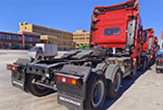Essential Tools and Machinery for Modern Farming Practices and Agricultural Efficiency
The Evolution and Impact of Agricultural Farm Equipment
Agriculture has been the backbone of human civilization for thousands of years, and as society has evolved, so too have the tools and equipment that support this vital industry. Agricultural farm equipment has transformed from simple hand tools to sophisticated machinery capable of increasing yield and efficiency, enabling farmers to feed a growing global population. This article explores the history, evolution, and impact of agricultural farm equipment on modern farming practices.
Historical Context of Agricultural Equipment
The journey of agricultural equipment began with primitive tools such as sticks, stones, and animal bones used for planting and harvesting. The plow, considered one of the most significant advancements, first appeared around 3000 BC, facilitating more efficient soil cultivation. As civilizations progressed, so did the complexity and functionality of farming tools. The invention of the seed drill in the 18th century by Jethro Tull marked a pivotal moment, allowing for more systematic planting and better crop yields.
The Industrial Revolution of the 19th century further revolutionized agricultural practices. Machinery such as the reaper, invented by Cyrus McCormick, mechanized the harvest process, drastically reducing the time and labor needed to collect crops. The introduction of steam-powered tractors in the late 1800s provided farmers with unprecedented power and efficiency, paving the way for modern mechanized agriculture.
Modern Agricultural Equipment
Today, agricultural farm equipment encompasses a wide variety of machines used for different tasks, including planting, cultivating, harvesting, and transporting crops. Tractors remain the cornerstone of modern farming, offering versatility and power for numerous attachments, such as plows, seeders, and harvesters. Precision agriculture, a practice that utilizes technology to increase efficiency, has led to the development of advanced machinery equipped with GPS and sensors. These tools enable farmers to monitor soil conditions, optimize planting patterns, and apply fertilizers and pesticides with pinpoint accuracy.
agricultural farm equipment

Another significant advancement is the use of drones in agriculture. Drones equipped with cameras and sensors provide real-time data on crop health, allowing farmers to identify problem areas quickly. This technology reduces the need for extensive labor and increases precision in managing crops. Additionally, autonomous equipment is making its way into the agricultural sector, allowing for tasks to be completed with minimal human intervention. These innovations not only save time and labor but also enhance productivity and sustainability.
Impact on Farming Practices
The impact of modern agricultural equipment on farming practices is profound. Enhanced efficiency means that farmers can cultivate larger areas of land with fewer resources. This is particularly crucial as the global population continues to grow, creating an ever-increasing demand for food. Moreover, the ability to produce more with less has significant implications for sustainability. By minimizing the use of water, fertilizer, and fuel, modern equipment contributes to more environmentally friendly farming practices.
However, the rise of advanced agricultural machinery also poses challenges. The initial cost of acquiring new technology can be prohibitive for small-scale farmers, potentially widening the gap between large agribusinesses and family-owned farms. Additionally, reliance on mechanization can lead to a loss of traditional farming knowledge and practices, which have been passed down through generations.
Conclusion
Agricultural farm equipment has undergone incredible transformations over the centuries, significantly shaping the way food is produced. From simple hand tools to high-tech machinery, these innovations have increased efficiency, productivity, and sustainability in agriculture. While challenges remain, the evolution of farm equipment presents an exciting opportunity for farmers to adapt to the demands of a changing world. As technology continues to advance, it will be crucial to strike a balance between innovation and tradition, ensuring that agriculture can meet the needs of future generations while preserving the rich heritage of farming.
-
SINOTRUK HOWO 84 Electric Dump Truck for Eco-Friendly Heavy HaulingNewsJul.26,2025
-
The Fast 16-Gear Manual Transmission Assembly for Heavy TrucksNewsJul.25,2025
-
Mercedes Benz Actros 1848 42 Tractor Truck for Sale - Reliable PerformanceNewsJul.24,2025
-
High-Quality Water Pump Assembly for Sinotruk Trucks – Durable & ReliableNewsJul.23,2025
-
Premium Truck Engine Antifreeze Coolant Fluid for Heavy Duty VehiclesNewsJul.22,2025
-
FOTON View G7 Mini Bus: Affordable & Spacious TransportNewsJul.22,2025
Popular products

























